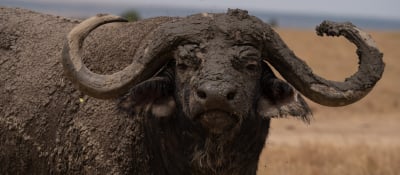INSPIRATION
Meru National Park: Kenya’s Hidden Gem for Untamed Safaris

When you think of Kenyan safaris, places like the Maasai Mara or Amboseli might jump to mind. But let us put you on to a hidden gem — Meru National Park, a wild and remote paradise with a fascinating history, epic wildlife encounters, and an unmistakable air of adventure. Discover over 500 animal species, 400 bird species, and 720 plant species. If you’re the kind of traveller who loves going off the beaten path, Meru should be calling your name.

A Park with a Story
Meru National Park, established in 1966, has a story as wild as its landscapes. The park owes much of its fame to the legendary George and Joy Adamson. This husband-and-wife duo made Meru their home while raising Elsa the Lioness, the subject of the iconic book and movie 'Born Free'. Elsa’s grave lies within the park, making it a sort of place of pilgrimage for fans of the story. Standing there, it’s hard not to imagine what it must’ve been like for George and Joy, living in this remote wilderness and pioneering a new way to interact with wildlife.
But Elsa’s journey started on a tragic note. In 1956, George Adamson was charged by a lioness in the bush and, acting in self-defense, shot her. It wasn’t until later that he realized why she had attacked him — she had been protecting her three cubs. George and Joy took in the cubs, naming them Elsa, Big One, and Lustica. While Elsa stayed with the Adamsons, her sisters were eventually sent to the Netherlands. Elsa’s bond with the Adamsons grew so deep that she became the first lioness to be successfully reintroduced into the wild — a groundbreaking conservation effort for its time.

But Meru’s real treasure lies in its rhinos. Historically, Meru was home to over 200 black rhinos—the largest population in Northern Kenya. Then came the dark times of the 1970s and ’80s, when poaching wiped them out, making rhino populations extinct. For a time, it seemed like hope was lost.
Thankfully, conservationists stepped in, and reintroductions began in the 2000s. Although poaching once again threatened the rhinos between 2008 and 2015, measures have since been put in place to ensure their safety through a fenced rhino sanctuary within the park.
Today, Meru boasts a thriving rhino sanctuary, with 100 white rhinos and 45 black rhinos, including six calves born this year (shoutout to the Sheldrick Wildlife Trust for that stat!). Seeing these magnificent creatures in their natural habitat feels like stepping into a success story that’s still being written.

Meru’s Wildlife Encounters
When it comes to wildlife, Meru is teeming with it. Wildlife enthusiasts can spot all the iconic African species:
- Big Cats: Lions, cheetahs, and leopards roam these lands.
- Elephants: You’ll often find herds by the rivers or swamps, cooling off under the African sun.
- Rhinos: A fenced rhino sanctuary within the park makes it one of the best places in Kenya to see these magnificent creatures.
- Other species: Giraffes, zebras, hippos, buffaloes, and over 400 bird species, including Somali ostriches and purple grenadiers.

The Landscape
Meru’s scenery is just as dramatic as its stories. This is a land of contrasts — 13 rivers weave through the park, flanked by lush riverine forests, while open plains stretch to the horizon. Swamps, rocky hills, and baobab trees add to the park’s wild charm. It’s not polished or predictable; it’s raw, rugged, and alive.

So, if you’re ready to ditch the crowds and embrace the wild, Meru National Park is waiting for you. Bonus points if you visit Elsa’s grave and say a little thanks for the lioness who put this magical place on the map.
Our Top Experiences
SEEN SOMETHING YOU LIKE?
Enquire now and our team will create a custom itinerary tailored to your preferences.

CONTACT
enquiries@nomad.africa
Tel: +254 708 238 738
Purple Nomad Ltd
PO Box 69671 - 00400
Mwanzi Avenue, Nairobi, Kenya




